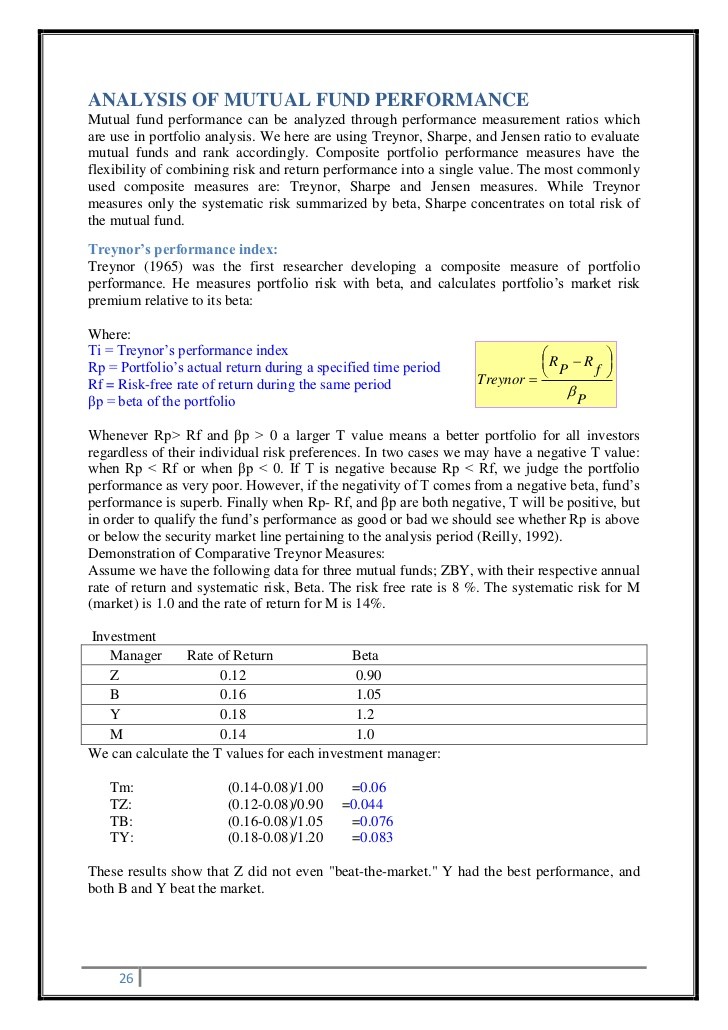Mutual Fund Performance Metrics How to Tell Good Funds from Bad
Post on: 9 Июнь, 2015 No Comment

Are you thinking about investing in mutual funds? Doing so requires at least as much research as buying a new car. These are the four key mutual fund performance metrics you should use to pick which fund is best for you.
There are few things more exciting than buying a new car. If youre anything like me, you do a lot of research beforehand. You read reviews of the handling, towing capacity, horsepower and resale value – basically whatever statistics you place value on.
Youll go online to check prices and call your cousin who works in the automotive industry to get his take on the company and model types. You dont mind putting in the effort; after all, you are plunking down quite a bit of cash and committing to this vehicle every month for at least a few years.
When it comes to our retirement though, something that you (hopefully) value more than a new car, we tend to skimp on the research. Oh, you might play at it by asking a friend who has an advisor he goes to. You might even read the funds information available on the company website, but your eyes glaze over at all the figures and you tell yourself investing in something is better than nothing, so it doesnt really matter.
Unfortunately, too many of us dont do our due diligence and end up in something that performs poorly or even loses money. The problem is not knowing what to look at amongst the myriad charts and tables.
When deciding where to invest, however, there are only a few key mutual fund performance metrics that matter and you dont need letters after your name to figure them out.
Performance
The first thing youll notice when checking out performance figures for a fund is a list of returns over a three-, five- and 10-year time period. These figures may vary quite a bit and lead to confusion as to whether or not the fund is any good. Remember youre investing for the long term, so the longest timeframe should be used. The 10-year average should be your primary base for real returns. Short term market gyrations can throw off returns in a short time period even in a good fund. One down year isnt enough to condemn an investment vehicle if the other nine outperformed.
Risk Profile
The second place you should look is the risk profile of the fund. There are a number of ways to approach and value this metric, but essentially youre comparing the fund youre looking at to the average of all funds of its type. Then, see if it is more or less risky than that index. If youre not the type to use your own standard deviation formulas, a good source for information is Morningstar. Theyve done the research for you and will give a valuation of below average, average, or above-average risk.
Expense Ratio

One consideration to keep in mind is the expense ratio of the fund you choose. The higher the ratio, the more it eats away at your returns. If the fund earns 8 percent, but comes with an expense ratio of 1.75 percent, you actually earn 6.25 percent. Over the long term, those missed gains could end up costing you quite a bit. Always make sure you double check the true cost of owning a fund so you dont get blindsided by lower-than-expected results.
Management
The last thing you want to research is often overlooked. One of the more important things that can throw off risk and return numbers is management. In a mutual fund, a good team is important, and you want to see managers that have been with the fund for a long time.
What good is a 10-year average if a new fund manager replaces the old one a year after you buy in? Take for example Dennis Stattman of Blackrocks Global Allocation Fund. Hes been making investment decisions since 1989 and has no plans to retire any time soon. Its safe to say the 10 average of his fund is an accurate portrayal of his effectiveness.
Remember that data is only useful when used in comparison with another fund, so make sure you dont settle with the first thing you look at. Morningstar is an excellent screener for mutual funds and even gives star ratings you can use to narrow down your search. The site goes the extra mile and even assigns badges to funds they find particularly compelling. These will show up next to the rating and are given ranks such as bronze, silver, or gold.
How do you evaluate mutual funds?














